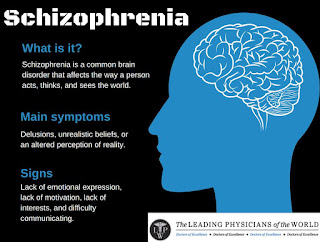Illness and Disability
Do you know
that millions of young people have an illness or disability? There is a
difference between the two. An illness is a sickness. Some illnesses
are acute, which means they come on quickly and are over quickly (like a cold
or the flu). Other illnesses are chronic, which means they last a long time and
perhaps a lifetime (like asthma or diabetes). A disability is a
physical or mental problem that makes it harder to do normal activities on a
daily basis.
You can be born with a disability or get it later on from an
illness or an injury. Many different kinds of illnesses and disabilities can
affect people. If you have an illness or disability, you know that taking care
of your needs can be hard sometimes. But you can learn about the skills and
support you will need to live well with a disability or chronic illness.
Young
people with chronic conditions often have a lot more difficulties dealing with
the tasks of adolescence than their healthy peers. National, population based
studies from Western countries show that 20-30% of teenagers have a chronic
illness, defined as one that lasts longer than six months. However, 10-13% of
teenagers report having a chronic condition that limits their daily life or
requires extended periods of care and supervision.
The burden of chronic
conditions in adolescence is increasing as larger numbers of chronically ill
children survive beyond the age of 10. Over 85% of children with congenital or
chronic conditions now survive into adolescence, and conditions once seen only
in young children are now seen beyond childhood and adolescence. In addition,
the prevalence of certain chronic illnesses in adolescence, such as diabetes
(types 1 and 2) and asthma, has increased.
Impact of chronic conditions on adolescence
Chronic
conditions in adolescence can affect physical, cognitive, social, and emotional
spheres of development for adolescents, with repercussions for siblings and
parents too. Common sequelae of chronic illness and its treatment include short
stature and pubertal delay. Undernutrition is common in many chronic
conditions, and obesity can result from conditions that limit physical activity.
Visible signs of illness or its treatment mark young people out as different at
a time when such differences are important to young people and their peers.
Body image issues related to height, weight, pubertal stage, and scarring can
significantly contribute to reduced self-esteem.
If you know
someone with an illness or disability, you should know some things, too. When
you understand the types of challenges faced by someone with an illness or
disability, you will know how to be a better friend or family member to that
person. Keep in mind that people with disabilities are, above all, people who
have great gifts to share. In fact, some people who might seem to have a
disability don’t even think of themselves as having one. In the end, young
people of all shapes, sizes, and conditions want many of the same things in
life — to feel good about themselves and their relationships, to be able to
take care of themselves and their needs, and to pursue their hopes and dreams
just like everyone else.




Comments
Post a Comment